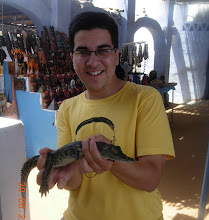Ibn Al-Haitham's Billiard Problem

Perhaps my first science-oriented post on the blog, so here I go!
Today I present you with a problem and leave you with the task of attempting to understand [and search for] the rather complex underlying solution.
Because this is one of the easiest problems to state and one of the simplest looking ones; I chose to put it here. The problem was, originally, proposed by Ptolemy [a Roman-Egyptian by the way and who died in my city, Alexandria!] and discussed [in the context of optics] by Muslim scientist Ibn Al-Haitham (Latin: Alhazen) [who also lived a part of his life in Egypt!] who is often called the father of optics. Because Ibn Al-Haitham stressed himself out so much over this particular problem in his writings, it eventually became known as Alhazen's Billiard Problem or Alhazen's Problem.
Ibn Al-Haitham's contributions to the understanding of the nature of vision and his experimental verification that light traveled in straight rays were some of the earliest explorations in what later came to be called the scientific method (briefly: the idea of observing, developing hypotheses, experimentation of the hypotheses and developing conclusions).
Enough babbling then, to the [modernized] statement of the problem:
Given a circular billiard table, find the point on the circular edge at which the cue ball must be aimed in order to strike the edge once before rebounding to strike another ball at another given point.Simple enough, eh? In a circle, draw an isosceles triangle whose legs pass through two points inside the circle. Good luck doing it with a compass and a pencil though! Alright, that was mean...The solution starts with the word 'Neumann'. Now time for your own research!
Until we meet later,
God bless and don't forget to check this if you haven't already!
P.S: My interest in Ibn Al-Haytham, though I was interested in him a long time ago, was revived through watching an episode of Ahmed Al-Shekeiry's Khawatir [Season 6] that spoke of Ibn Al-Haytham's experimentation with the idea of imaging.


No comments:
Post a Comment